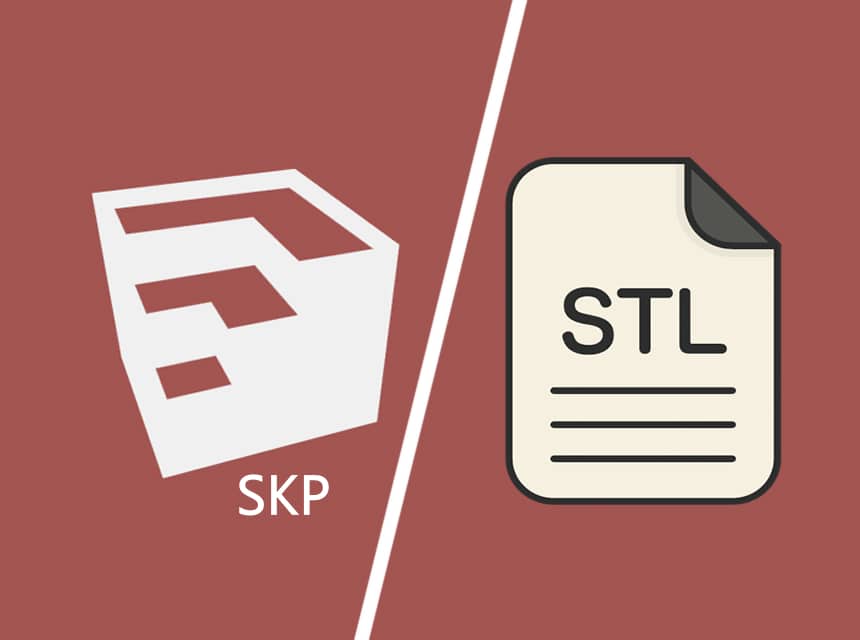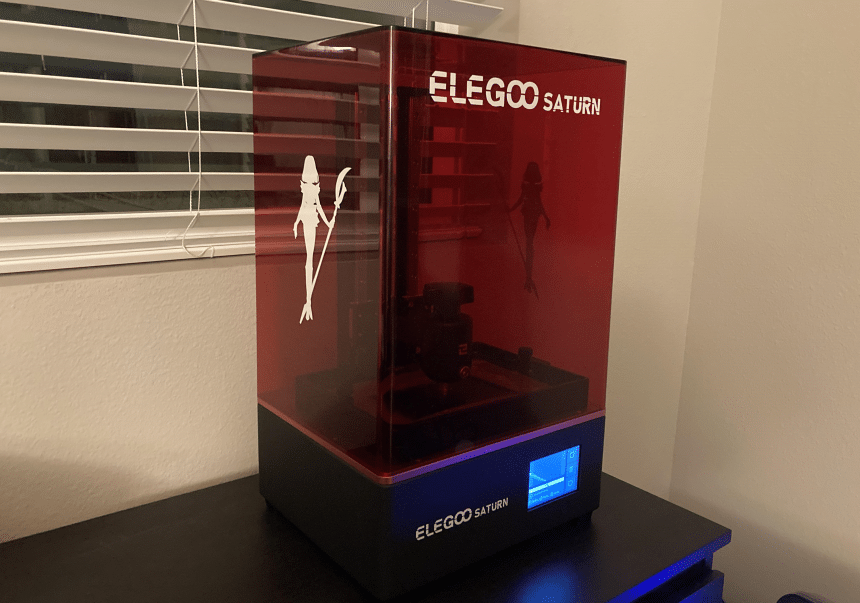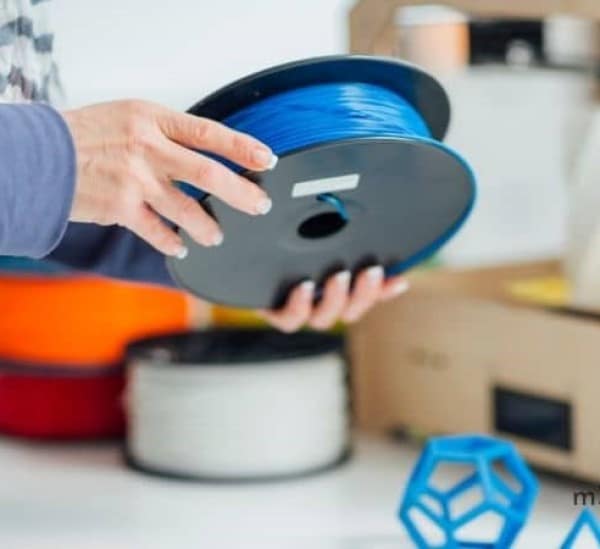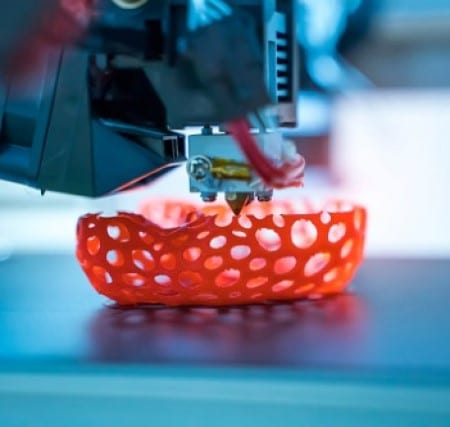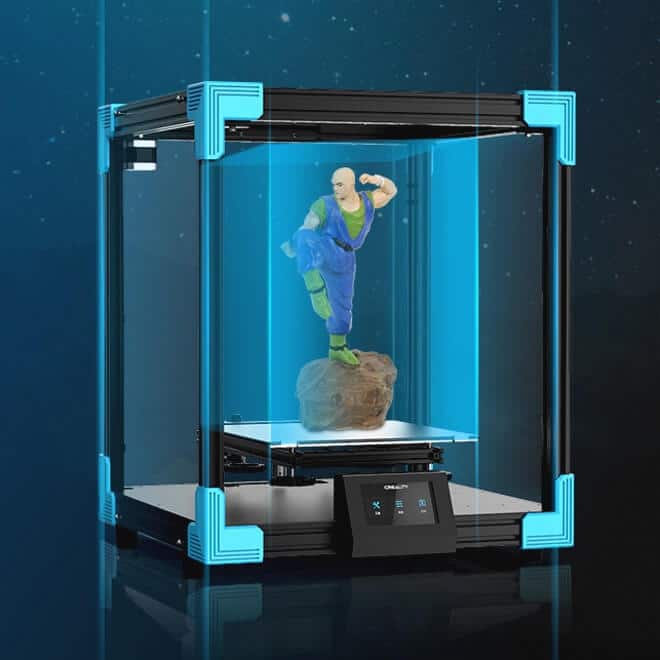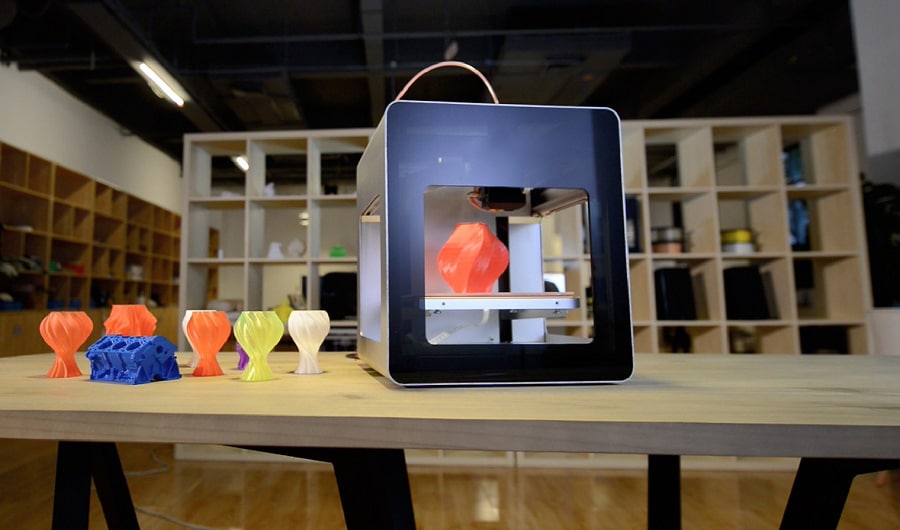

3D printers have become popular all around the world, and people are using them to create a myriad of stuff – from toys to prototypes. With such a wide range of flexibility, it’s not a surprise these devices have found a place in design shops, homes of hobbyists, and even classrooms. But getting the best 3D printer under 2000 dollars can be taxing. Especially if you realize that not all top-rated printers are as effective as advertised.
With a wide range of use comes a wider range of options for the best 3D printers. The 3D printers for a classroom or home will not be the same product used for prototyping. Fortunately, we have reviewed the top eight 3D printers designed for various tasks. For more clarity, we have included essential features such as filament types used, dimensions, weight, maximum build size, compatibility, warranty, among other great desirable features. With these highlights in mind, the Editor’s Choice goes to the Dremel DigiLab 3D45.
More features: heated build plate, build-in HD camera, 9-point leveling, 4.5-in touchscreen, RFID tagging, enclosed housing, Wi-Fi enabled cloud print.
The award-winning Dremel 3D printer is engineered for anyone, from novices to professionals, to operate. This powerful printer is backed by Dremel’s lifetime support. 3D45 is reliable and engineered for heavy usage. The easy-to-use features and a detailed start guide will enable you to operate it with much ease. You can go from unboxing to printing in minutes.
If you’re looking for a reliable printer, then start with Dremel DigiLab 3D45. It’s explicitly designed for reliability and high quality. The direct drive, all-metal extruder, is clog-resistant, ensuring it delivers smooth 3D prints. It’s fitted with a built-in automatic leveling sensor to add precision for more reliable printing. The incredibly powerful extruder heats up to 280°C for flexibility in various print materials.
The heated build plate heats up to 100 degrees Celsius to allow you to print different filament types such as Nylon, PLA, ECO-ABS, and PETG. The 3rd generation printer comes with a built-in HD camera for remote print monitoring.
The fully enclosed housing enhances print quality while delivering a quiet operating environment. RFID tagging auto detects filament type and adjusts nozzles to optimized settings. The 4.5 inches’ full-color touch screen allows easy and intuitive navigation.
What we liked: The Dremel DigiLab 3D45 comes loaded with robust software, it’s featured-packed, and prints accurately.
What could be better: The touch screen could have been more responsive to fast operations.
More features: 0.4 mm nozzle diameter, heated metal plate, 40 dB noise level, HEPA filter, assisted bed leveling, remote monitoring, USB and Wi-Fi connections, LED light.
Sindoh was established in 1960, and it has dedicating itself to remain the best printing industry in Korea. With their long experience and manufacturing capabilities, Sindoh has produced one of the best 3D printers- Sindoh 3DWOX 1- in the market. They use the latest technology to engineer reliable, solid, and high-quality printers.
The Sindoh 3DWOX is a fairly large 3D printer measuring 8.2 x 7.9 x 7.7 inches. Its print resolution is decent at 50-400 microns. The blazing speed of up 200mm/s ensures you produce fine results on time.
Are you looking forward to using open source filament? You can select the open material mode and find out more 3D printing capabilities. You may also select the Sindoh filament for consistent and smooth prints.
The flexible metal bedplate enhances both safety and bed adhesion. With the heating capability and flexibility merged in one metal is a whole lot revolution. The Sindoh 3DWOX is enhanced with the High-Efficiency Particulate Air filter to purify the air. HEPA will arrest very fine particles to prevent dirt built up during printing. Allow this powerful printer to assist you in creating a healthy printing environment.
Silence is the most pleasing sound of Sindoh 3DWOX 1. With the library noise level of 40 dB, you’ll enjoy a quiet printing experience.
What we liked: The Sindoh 3DWOX 1 is a highly responsive, and easy to use and ready 3D printer enhanced with desirable features like nozzle cleaning and assisted bed leveling.
What could be better: Sindoh should work on the bed adhesion for perfect ABS printing.
More features: Wi-Fi enabled cloud print, flexible build plate, 3.5-in touchscreen, enclosed housing, 9-point leveling, UL certified, 8GB internal storage
Dremel has been in the industry for quite long with a rich experience, evidenced by the Dremel DigiLab 3D40 Flex printer. The 3D40 is an award-winning printer geared to classrooms. This product boasts of reliability, hassle-free setup, and easy-to-use features. The combination of these features ensures you can get your first, smooth print in a few minutes. The direct drive, all-metal extruder, is the engine that powers 3D40 FLEX. It’s clog-resistant and delivers fine 3D prints. It also heats up to 230 degrees Celsius. The built-in detection sensor pauses the filament when it runs out and resumes printing when the new filament is added. The automatic Leveling sensor is another great addition to the extruder head. It adds precision leveling for high-quality and reliable printing.
Enhanced with Static IP, Dual 1GHz, and Proxy, the printer achieves reliable and fast cloud printing. You can connect to it via Wi-Fi, Cloud, or LAN. This allows you to queue prints, manage user access, run reports, or view print history using the administration portal.
The built-in plate has ergonomic handles and a magnetic snap-on mechanism to make print removal fast and easy.
What we liked: The Dremel DigiLab 3D40 Flex is an easy-to-use 3D printer with a wider mix of connectivity options and user-friendly software.
What could be better: the filament choice is quite poor, and loading it might prove troublesome
More features: 4.3-in touchscreen, removable plate, double Z-axis, 1.75 mm filament diameter, 0.4 mm nozzle diameter, USB connection
QIDI Technology has focused on manufacturing high-performance 3D printers, and QIDI TEC X-Plus is no exception. This printer is engineered to have two different ways of placing filament- the ventilative printing or enclosed constant temperature printing. You can place the filament outside. The filament will feed more smoothly while printing TPU, PLA, and PETG. The second option is where you place the filament inside. This option is for printing advanced materials such as carbon fiber, nylon, or PC, which needs an enclosed constant printing temperature.
The QIDI TEC X-Plus is designed with two sets of extruder assembly with different printing capabilities. Extruder A is used for printing general materials like ABS and PLA. The other extruder is for advanced materials. The 4.3-inch touchscreen is large with a user-friendly interface. You’ll be instructed on display during the printing process, making it more intuitive, precise, and easier to operate.
The printer comes with the latest slicer software version 5.0, which is smarter and more convenient to operate. Other features include a removable, curved metal plate that can be used repeatedly. More so, it can minimize the damages of offsets to the build plate.
What we liked: QIDI TEC X-Plus is an innovative machine with amazing features and design.
What could be better: The instruction manual should have been made easier for users to follow.
More features: enclosed casing, a 5-in touchscreen, Wi-Fi connection, air purification, a quiet printing function, removable plate, double Z-axis
QIDI Technology is a China-based company that has steadily earned praises for their 3D printers. The printers come with premium features and competitive prices. And the QIDI TECH X-max is among the best products. This device takes pride in an extra-large volume of 11.8 x 9.8 x 11.8 inches, for voluminous printing tasks. The 3D printers can also handle trickiest materials.
Like the plus series, the X-max comes with creating two different ways for placing the filament. The ventilative option is where the filament is outside. This is suitable for materials such as TPU, PLA, and PETG. The second option is where the filament is inside. It helps in maintaining a constant temperature for printing materials such as PC, nylon, and carbon fiber.
The updated double Z-axis brings more stability for large size prints. The redesigned UI interface is more convenient to operate and improves the print speed by 20% and quality by 30%. The software is compatible with all QIDI Tech 3D printers.
The QIDI TECH X-max operates at 50dB, meaning you’ll enjoy a quiet printing environment. You can, therefore, place this device anywhere in your home.
What we liked: The QIDI TECH X-max is painstakingly designed to deliver quality prints with almost any filament.
What could be better: The printer cannot automatically stop if the filament runs out. You need to keep an eye on it at all times
More features: 1.75 mm filament diameter, 6.3 mm thick aluminum plate, 0.4 mm nozzle diameter, USB connection
The FlashForge 3D Printer is mainly recommended for individuals who are new to the 3D printing field. The ease of use and incredibly low prices, the FlashForge 3D Printer is a good companion for novices. It offers exceptional print quality, and it’s easy to use.
The printer offers an 8.9 x 5.8 x 5.9 inches print area, which prints smoothly. It’s also easy to insert and remove. The cube size of the printer is 20.7 x 14.1 x 21.7 inches. The sturdy metal frame is substantially stable and durable compared to its predecessor.
When it comes to reliability, the FlashForge 3D Printer leads the pack. Thanks to an aviation level aluminum plate with a thickness of 6.3mm. Its flat surface will not warp during the heating process. The metal platform ensures precise Z axis movement and protects the arm from deforming.
The new acrylic cover encloses the change for optimal insulation and to protect the ABS prints. It’s also endowed with a LED light that illuminates the printing area. The button board works precision with an SD slot for more convenient access.
The critical defining feature is the dual extruders for dual-color prints; more so, the device is valued for its firmness and ability to utilize multiple filaments.
What we liked: The FlashForge 3D Printer features an excellent build platform to create a stable vertical movement. It also features a durable frame for added stability.
What could be better: The setup process could have been easier if the instructions were sufficient.
More features: 3.5-in LCD touchscreen, dual Z-axis, USB connection, 8-15sec printing speed per layer, LED light.
If you’re looking for a 3D printer with the highest resolution and precision, SainSmart Kumitsu KL9 should be your ultimate choice. The device offers high accuracy for excellent printing results. The parallel light ensures the scattered lights are more focused.
With a build volume of 4.72 x 7.56 x 9.84 inches, the printer offers exciting possibilities for your creative ideas. More so, it makes the printing process fun and hassle-free. You don’t need any expertise to set this gadget up. Adopts the modular design to help you get the machine assembled with ease. It saves you time and effort.
Both the build plate and aluminum resin vat are produced in one-piece, therefore, offering great durability. With screws on each side, replacing the FEP film is effortless. The Z-axis of the KL9 is endowed with a thick aluminum alloy structure. The sturdy linear actuators can enhance the overall smoothness and accuracy of the parts produced.
With SainSmart Kumitsu KL9, you can have peace of mind knowing you won’t have heat management issues due to an effective heat dissipation system. It minimizes the curing temperature of the resin. The ChituBox Slicing Software for an exciting printing experience.
What we liked: The SainSmart Kumitsu KL9 is a reliable LCD printer suitable for mid-level and advanced professionals. The easy to use interface, a variety of software, solid construction, and moderate build-volume makes it a reliable device to have in your possession.
What could be better: while this printer is great for miniatures, you have to be extra careful with settings and measurements, as well as clean the nozzle thoroughly due to elements being delicate
More features: open-source electronics, SD card reader, 0.35 mm nozzle diameter, 80-200 mm/sec printing speed, heated platform
MakerGear is an Ohio-based company that manufactures reliable and durable printers. The company’s goal is to make you delighted with their products. The company has spread its wings in all 50 states and more than 70 countries across the globe. And to empower users to transform concepts into ideas, MakerGear designed M2 is designed.
To actualize your ideas, you need the right tool in your hands. Thousands of people choose MakerGear M2 to create products for classrooms, labs, businesses, and even prototyping. It’s also the best desktop 3D printer under $2000 developed by MakerGear. It’s a reliable product that offers an incredible combination of quality, price, speed, and excellent features.
The MakerGear M2is a ready-to-use printer that you can operate immediately out of the box. It’s enhanced with a Quick Start Software accompanied by a step-by-step guide and tutorial video to take you right from unboxing to your first prints.
The printer uses open-source firmware and electronics. It also provides the flexibility and versatility you need to complete your project. With a steel frame and CNC machined cast aluminum construction, the MakerGear M2 is manufactured to offer industrial level precision.
What we liked: The MakerGear M2 strikes a balance between affordability and quality. Its ease of use makes it suitable for novices and professionals.
What could be better: We feel like this model brings excessive noise and it might distract if you work at the same room
Some years back, 3D printers were only confined to industrial use, with heavy price tags. Luckily, there are consumer printers, which come at various prices, sizes, and other essential features. We will point out crucial factors to help you buy the best 3D printer under $2000.
3D technology is now being used in various sectors. Some use it in the classroom, or small-scale prototypes, or developing tools. Today, 3D printing is more widespread and affordable than it was back in the 1980s. We’ve got the many uses for your brand new 3D printer.
Automotive
3D printing is deployed in the automotive industry to revolutionize the design of vehicles. For instance, the Strati, which is an electric car, took 44 hours to print. The car was engineered using a large-scale 3D printer.
MINI, a car manufacturer, launched a 3D printing service to enable clients to create car parts such as parts of the side plates and door handles.
Printing Solutions in the automotive industry offers a myriad of benefits, mostly to enhance performance. This technology is a game-changer in the industry, with the sales projected to reach 114 million by 2024.
Education
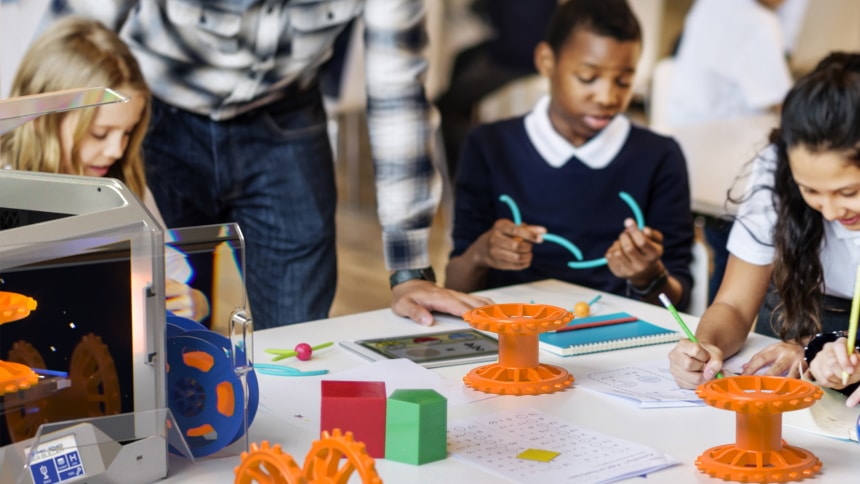
3D printing technology has been used deployed in teaching STEM subjects. It gives students a chance to design and explore their creativity.
Engineering
The engineering industry is one of the biggest beneficiaries of 3D printing technology. some companies use the formula to create some parts of the racing cars. This technology can give a fast response and shortens the timeframe of parts development.
3D printers are used for production and prototyping. As a result, it reduces prototyping costs in tools such as vibrating bullets and cable threading needles.
Medicine
3D printing applications in the medical world has brought immense changes. They range from devices such as prosthetics to bioprinting, where cells and growth factors are coupled together to create tissue-like structures.
This technology has simplified the production of prosthetics, which was previously expensive and sophisticated. Formerly, children in need of prosthetics had to wait for long. Today, prosthetics can be created every few months using 3D printers.
The technology can also be used in producing metal orthopedic implants. 3D printers can create porous surfaces, enabling the implants to integrate precisely with the patient’s natural bones.
Aviation
The aviation industry has also largely benefited from 3D printing technology. aircraft manufacturing has deployed 3D printers for creating spacer panel parts.
Honeywell is already using 3D printing in the supply chain to enhance existing components. Airbus is another aircraft company that’s using 3D printed parts in their aircraft. Boeing is not left behind in using 3D printing. The company has created over 59,000 parts, and the number is likely to go higher as more parts are improved and developed.
The aviation world is embracing 3D printing since it makes planes quieter, lighter, and efficient.
Architecture
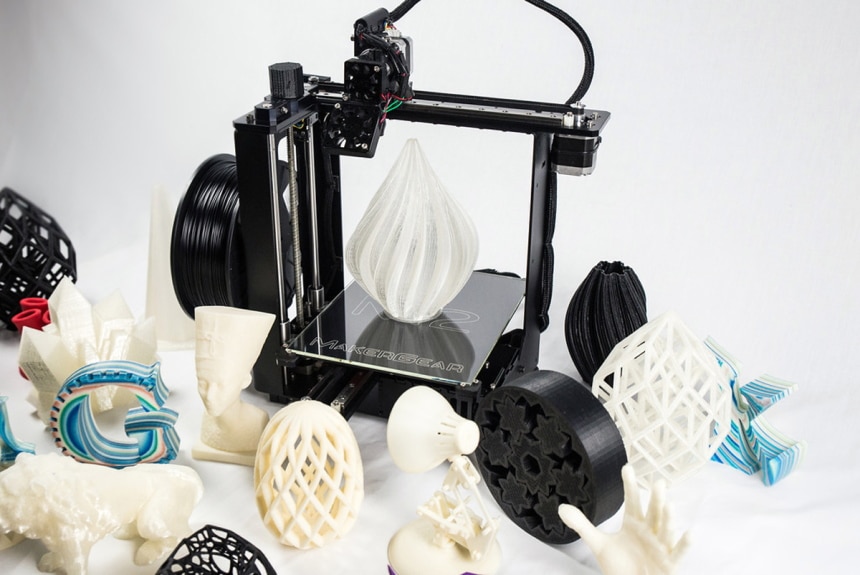
With 3D printing, the entire process will be simplified. It can render detailed physical models of colors and materials. it also helps clients and buyers have a better idea of what the final project will look like.
It saves money, time, and effort. Architects can also make some tweaks, if needed, instead of waiting for the whole building to complete to realize there were adjustments needed.
3D printing technology has the potential to revolutionize the manufacturing industry, enabling organizations and individuals to produce and design products in the most amazing way. But no matter the application, 3D printing follows the same basic steps. Hence, the process is the same as the health industry to the classroom.
Its process starts with crafting a 3D blueprint using CAD software (commonly known as computer-aided design). It’s your imagination that will only limit you. Once you create the blueprint, prepare the printer by refilling raw materials such as metal powders and plastics. The machine will then automatically take over and build the desired object.
Once the printing is done, every product will require post-processing. It can be unsticking the items from the build platform to the brushing of excess powered. This video will help you more in learning how a 3D printer operates:
The best 3D printer $2000 is designed with distinguishable features to meet your needs. the $1000-$2000 is a recommendable price range for excellent performance, decent speed, and high-quality prints.
But if you go below that range, you’ll need tons of adjustments, tinkering, and regular maintenance to keep the machine running.
If you want the best shoes, you would consider the pone that offers support, comfort, and even suits your budget. the same applies when it comes to choosing the best 3D printer under 2000 dollars.
With a plethora of choices out there, you need to figure out essential features to help you pick a reliable product. The features will help you pick the most reliable product on the market.
Build area and printing volume are fundamental decisions to make when choosing a 3D printer. Despite a wider price range, it’s pretty obvious that a larger build area comes with a heavy price tag. QIDI TECH X-max is one of the printers with a large build area measuring 11.8 x 9.8 x 11.8 inches to handle a large job volume. But this will ensure that you handle voluminous work effectively.
Generally, it’s advisable to choose a 3D printer with a build area of at least 5 x 5 x 5 inches. this is big enough to handle most printed parts. it might be limiting to have a printer with a small build area. however, you can break down jobs into smaller tasks, then couple them together afterward.
When it comes to a 3D printer, quality and speed are essential features. you wouldn’t want to spend an entire day printing a few items and still get poor quality. speed should be given significant consideration.
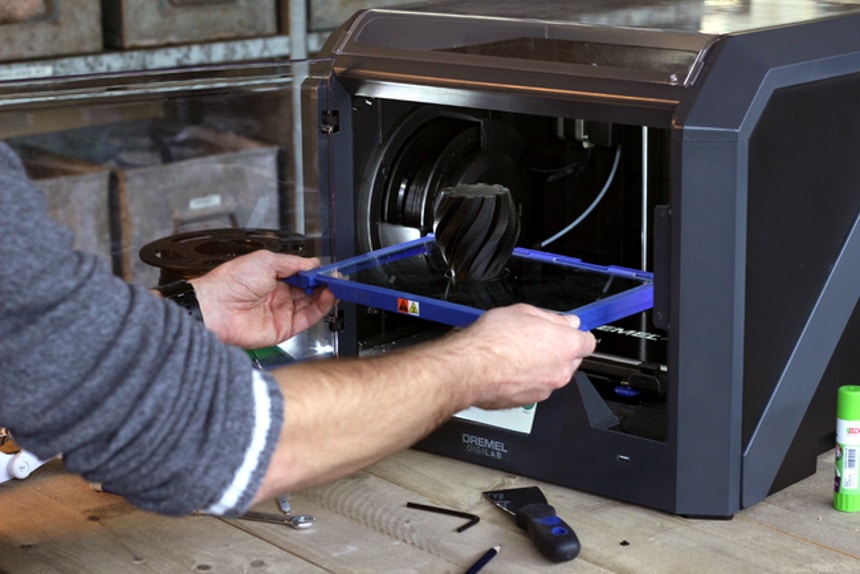
If you’re working with advanced materials such as carbon fiber or nylon, then you should go for machines like QIDI TEC X-Plus. This allows you to diversify your creativity.
Typically, most 3D printers can accommodate materials such as PLA, ABS, and Nylon. FlashForge is compatible with several materials, including PLA, ABS, ABS Pro, Elastic, PVA, HIPS, PETG, TPE, TPU, and PP. this highly versatile machine is also suitable for novices and professionals.
In the last decade, 3D printing software has significantly advanced to create life-like models and enhance design efficiency. More so, it could cost millions to develop software for 3D printers. It also required the operator to have a set of skills to set it up and operate.
Fortunately, 3D printing software tools have become seamless and affordable. The software turns the printer into a real model you can touch and use CAD.
The slicer is one of the most mostly used software in 3D printers. This model converts 3D objects to particular printer instructions. When you’re choosing software, look for customization features such as edit history and sculpting. Software with cloud capabilities will enhance efficiency. The software in Dremel DigiLab 3D40 Flex makes it easy to operate the printer. It also boosts its performance and print quality.
A 3D printer is a delicate piece of hardware that needs to be operated precisely. And just like any electronic appliance, it needs detailed and clear instructions for easy and right operations.
A reliable manufacturer will ensure a detailed and comprehensive instruction manual accompanies the package. The document is useful for both professionals and beginners. Instructions should give you a step-by-step guide on how to assemble the machine, how to start it, and maintenance.
If this is not working, you may call customer support for more help.
A guarantee gives you an assurance that the company will replace or repair the product if it’s defective within a given time. It gives you extra protection. for instance, the 3D printer you order might arrive broken. In this case, the manufacturer will replace or repair the product, based on the degree of defectiveness.
That’s why you should ensure you purchase a 3D printer that comes with a warranty. The MakerGear M2 comes with a 6-month limited warranty, while a product like FlashForge 3D Printer has a 90-day limited warranty with full refund.
Different manufacturers offer different guarantees. Whichever 3D printer you choose to buy, ensure it has a warranty.
The majority of 3D printers are designed in such a way that you can connect them to a laptop or PC via a USB cable. Some machines add their internal memory to keep a print job in memory and continue with the process even with a disconnected cable.
A few of these third-generation printers offer wireless connection, either via Wi-Fi or peer-to-peer link. With this connectivity, you can have multiple people using the printer. The sharing of designs and ideas also becomes easy.
Some 3D printers don’t have casing or cabinet. These products are sensitive to temperate. Others work in enclosed chambers to ensure the temperature remains constant. The enclosed chambers are generally expensive but deliver high-precision prints. And some have the two-chamber options like FlashForge 3D Printer.
Open 3D printers are suitable for PLA and PETG filaments. The closed printers are ideal for filaments such as PC, PA, ABS, carbon fiber, and metal-filled.
Heated build platform in a 3D printer ensures there is less curling and warping of the plastic. This is due to the even distribution of the cooling process. PLA and ABS can sometimes curl up or shrink at the edges. This can even worsen as more layers are added.
To solve the problems, the heated platform is used to keep other layers warm. The bed is insulated, so the parts don’t melt or soften.
Other great features include extruders. The extrusion involves melting and placing materials in layers. The number of extruders is a significant factor when buying a 3D printer. If you want to work on multi-colored prints and designs, then buy a machine with multiple extruders such as FlashForge 3D Printer.
Single extrusion is okay for novices and creating simple parts. But such a machine might not hand multi-colored or sophisticated parts effectively.
Printer resolution is another crucial factor to consider. Resolution defines the level of details and clarity, normally measured in microns. The higher the resolution, the finer the parts. The SainSmart Kumitsu KL9 printer has a high resolution, which provides the level of detail you need.
You should also consider the size of the 3D printer. Get to know the structures of objects you want to print and check if they can fit in the print bed.
It’s also advisable to choose a device that is versatile enough to work with different filament types.
Not all printers are fitted with air filters. This leads to clogs that can impact the device negatively. A clog can alter the design or foul the smoothness and quality of the prints. Cleaning the nozzle is the most straightforward task. Simply take the nozzle out of the printer and clean it.
Also, clean the extruder since it’s the most sabotaged part by debris. Unscrew it, remove the cover, and you might need a bit of dismantling. Use a sharp object to scrape off the grease.
After cleaning the hardware part, ensure you update the 3D printer firmware. It’s part of keeping your device clean.
Finding a reliable 3D printer can be an uphill task. But with all tips on your fingertips, the process becomes hassle-free. We’ve reviewed the crème de la crème on the market, ideal to meet your needs and suit your budget. However, we have the top three picks that awed us with their performance.
Our first pick is Dremel DigiLab 3D45, which is an award-winning 3D printer. It comes with a built-in HD camera for monitoring prints when using cloud software. This makes us consider it the best 3D printer under 2000.
Our second pick is Sindoh 3DWOX which is the most suitable printer for open-source filament. The machine has a flexible metal bed plate to enhance both safety and bed adhesion. HEPA is the most distinguishable feature of Sindoh 3DWOX, used for arresting tiny particles effectively.
Our third pick is Dremel DigiLab 3D40 Flex, that is perfect for beginners thanks that this machine is easy to set up. Plus, the built-in plate has ergonomic handles and a magnetic snap-on mechanism for easy print removal. It features a direct drive, all-metal extruder, clog-resistant printing, and an automatic leveling sensor for precision printing.
